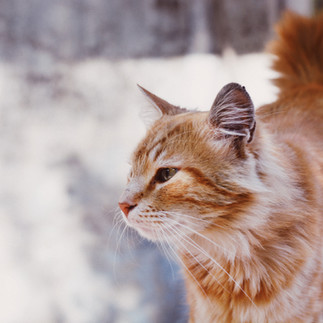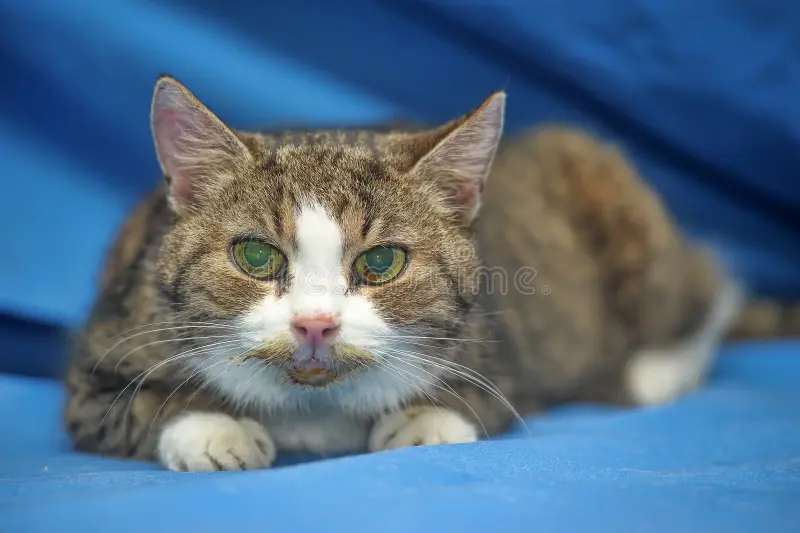My Cat has hyperthyroidism - what now?
- teganphadley
- Mar 28
- 3 min read
OVERVIEW
Hyperthyrodism is a disease caused by high levels of thyroid hormone and the presence of these increase the metabolism in the body. The thyroid gland produces thyroid hormones in response to stimulation by the pituitary gland - the “master
gland” of the body. These hormones normally increase chemical processes occurring within cells of the body.
However, in hyperthyroidism, the excessive hormone levels put the cells and body into “overdrive”. This condition is often caused by hyper functioning thyroid nodules but can occasionally also occur due to thyroid cancer (thyroid carcinoma). This condition occurs commonly in elderly cats, but can occur rarely in dogs also. Most cats are generally between 10-13 years of age at the time of diagnosis.
WHAT ARE THE SIGNS MY PET MAY SHOW?
Hyperthyroidism involves many organ systems due to the overall increase in metabolism. You may notice a
combination of several of the following:
- Weight loss or poor body condition
- Unkempt appearance
- Increased appetite and/or thirst
- Vomiting
- Diarrhea
- Rapid breathing or difficulty breathing
- Heart murmur, rapid heart rate, abnormal heart beat or a ‘gallop rhythm’
- Hyperactivity
- Aggression
- Large thyroid gland
- Thickened nails
HOW IS THIS DIAGNOSED AND WHAT ARE THE TREATMENT OPTIONS?

Hyperthyroidism is diagnosed by running a blood test on your pet to check what is known as their T4 levels. If this blood test shows that the T4 levels are higher than they should be, your vet will discuss an array of options for treatment. There is now a number of options available for the treatment of hyperthyroidism in your pet - the option that may be selected by you and your veterinarian will depend a few factors. These may include your pets age, your family's budget and whether or not your pet may be experiencing other conditions that require treatment at the same time. Below is a discussion of the common options that your vet will discuss if your pet has been diagnosed with this condition.
MEDICATION:

At home management is possible, but only so long as drugs that inhibit the production of thyroid hormones are used
correctly, given at the same time every day & regular bloods are run to determine efficacy. Methimazole is one of the most commonly used drugs and works to inhibit the production of thyroid hormones. It can be administered through the skin in some cases (transdermally) but is often given orally.
RADIOACTIVE IODINE
It is possible to use a treatment of radioactive iodine, which targets any abnormal tissue on the thyroid. It’s use requires
special facilities, and as such, availability of veterinary clinics offering this treatment is limited. Treatments can only be
performed by licensed and trained individuals at an approved facility; and requires inpatient monitoring for a week.
SURGERY
Surgical removal of the thyroid gland, known as a thyroidectomy, is one recommended treatment for hyperthyroidism
in cats that depends on the patient and circumstances. Your vet will help you determine if your pet is a candidate for
surgical removal. This approach to treatment is usually not curative but can control symptoms.
DIET – CATS ONLY
Hills Science Diet have a food product in their range that effectively treats hyperthyroidism.
This food acts to lower dietary iodine intake, therefore reducing excessive production of thyroid hormone. This food
MUST be fed as the ONLY food your pet has access to – you cannot let it get into another pets food, feed it treats or let
it roam – as such, outdoor cats that are unsupervised may not be suitable candidates for this treatment. The food MUST
be stored in its original packaging and not poured into an alternate bag/container, it must also be fed in a ceramic bowl that is used solely for this food and no other. It should be cleaned thoroughly before use if other food has been in
contact with it.
POSSIBLE COMPLICATIONS
Untreated disease can lead to congestive heart failure; diarrhea that is difficult to treat; kidney damage;
detachment of the retina (a layer in the back of the eye) as a result of high blood pressure (hypertension); and
death. Due to the effect that high thyroid levels can have on the system (sometimes making
other systems function quicker than they otherwise would), sometimes once the thyroid levels become stable with treatment, it is possible that early kidney disease is unmasked.
SUMMARY
Hyperthyroidism is a common condition in middle aged to older cats, and is considered a very treatable condition. In patients with otherwise uncomplicated disease—prognosis is excellent; recurrence is possible and most commonly is associated with poor owner compliance; regrowth of overactive thyroid tissue is possible, but uncommon after surgical
removal or radioiodine treatment. If you suspect your pet may be experiencing clinical signs associated with this condition, reach out to your vet to start the process today.
Written by:
Dr Tegan Hadley
BSc (Hons), DVM.








Comments